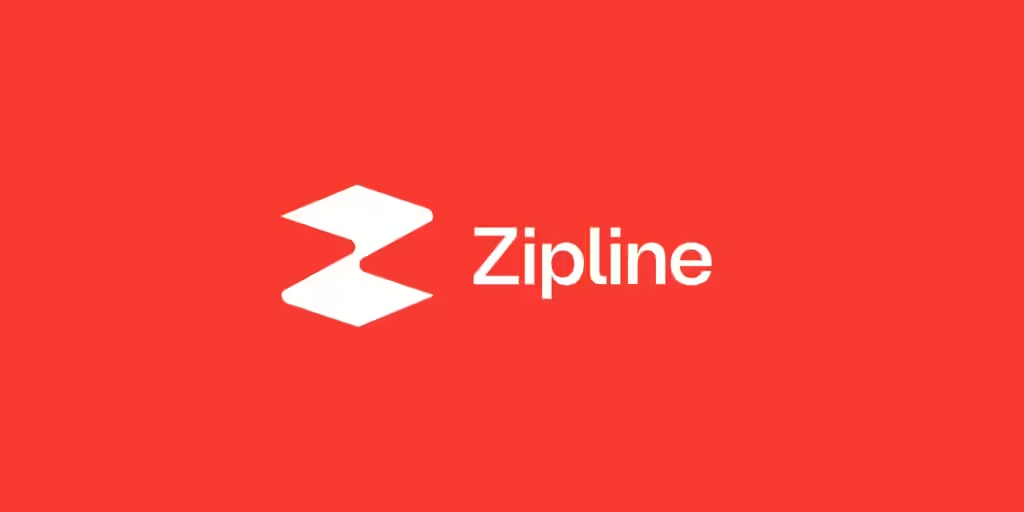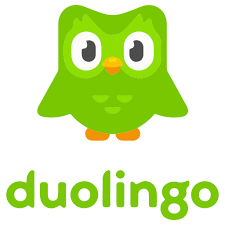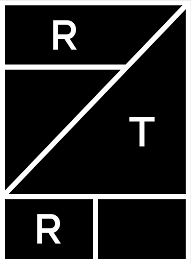Total Addressable Market (TAM) Mastery: Unlocking Growth Potential for Startups
Introduction
In the dynamic world of startups, few concepts carry as much weight as Total Addressable Market (TAM). This fundamental metric serves as a cornerstone for business planning, investor pitches, and strategic decision-making. At its core, TAM represents the total market demand for a product or service, essentially answering the question: “What’s the maximum amount of revenue a business could theoretically generate if it captured 100% of its market?”The concept of TAM gained prominence in the 1950s, primarily in the realm of strategic planning for large corporations. However, it has since become an indispensable tool in the startup ecosystem, where potential market size often outweighs current revenue in valuation discussions. In recent years, with the rise of data-driven decision making and the increasing sophistication of startup investors, TAM analysis has evolved from a back-of-the-envelope calculation to a nuanced, multi-faceted assessment.For startup founders, understanding and effectively communicating TAM is crucial for several reasons. It provides a north star for growth strategies, helps in resource allocation decisions, and plays a pivotal role in attracting investor interest. A well-researched and realistically presented TAM can be the difference between securing funding and being passed over in a competitive investment landscape.Investors, on the other hand, use TAM as a key metric to evaluate the potential return on their investments. A large TAM suggests room for significant growth and the potential for outsized returns, while a limited TAM might indicate constrained growth prospects, regardless of the startup’s current traction.However, TAM is not without its complexities and potential pitfalls. Overestimating TAM can lead to unrealistic expectations and misallocation of resources, while underestimating it might result in missed opportunities or undervaluation. Moreover, in rapidly evolving markets or for truly innovative products, accurately defining TAM can be challenging, requiring a blend of data analysis, market insight, and sometimes, educated speculation.In this comprehensive guide, we’ll delve deep into the world of Total Addressable Market. We’ll explore its definition, calculation methodologies, and strategic implications. Whether you’re a founder looking to refine your market sizing for an upcoming pitch, an investor seeking to sharpen your due diligence skills, or a business strategist aiming to guide your company’s growth trajectory, this guide will equip you with the knowledge and tools to master TAM analysis. From basic concepts to advanced strategies, we’ll cover everything you need to leverage TAM for startup success in today’s competitive business landscape.
Key Principles and Components of Total Addressable Market (TAM)
Understanding TAM requires grasping its fundamental principles and components. This section will break down the essential elements of TAM, its calculation methodologies, and its significance in the startup ecosystem.
Definition and Significance of TAM
Definition
“Total Addressable Market (TAM) refers to the total revenue opportunity available for a product or service if it achieves 100% market share. It represents the overall demand for a company’s offerings in a specific market segment.”
Significance
“TAM is crucial for startups as it helps founders and investors understand the potential scale of a business. A larger TAM indicates more growth opportunities, which can be a vital factor in attracting investment and guiding strategic decisions.”
Core Principles of TAM
- Comprehensive Market Scope: TAM represents the total revenue opportunity available for a product or service, assuming 100% market share.
- Dynamic Nature: TAM is not static; it evolves with market conditions, technological advancements, and changing consumer behaviors.
- Theoretical Maximum: While TAM represents the maximum potential, it’s understood that capturing 100% of the market is typically unrealistic.
- Foundation for Strategy: TAM serves as a basis for developing go-to-market strategies and growth plans.
- Investor Benchmark: It’s a key metric used by investors to assess the growth potential and scalability of a startup.
Key TAM Calculation Methodologies
Understanding different approaches to calculating TAM is crucial for accurate market sizing. Here are the primary methodologies:
- Top-Down Approach
This method starts with the largest possible market and narrows it down. - Steps:
- Identify the broad market size
- Apply relevant limiting factors (e.g., geography, demographics)
- Adjust for your specific product/service offering
TAM = Total Population × Annual Revenue per Customer - Example:
For a new smartphone app:
TAM = Global Smartphone Users × Average Annual App Spending per User - Bottom-Up Approach
This approach builds the market size from the ground up using known data points. - Steps:
- Identify the average revenue per user (ARPU)
- Estimate the total number of potential customers
- Multiply ARPU by the number of potential customers
TAM = Number of Potential Customers × Average Revenue per Customer - Example:
For a B2B SaaS product:
TAM = Number of Businesses in Target Industry × Annual Subscription Price - Value Theory Approach
This method is useful for innovative products without clear market precedents. - Steps:
- Identify the value proposition for potential customers
- Estimate how much customers would be willing to pay
- Determine the number of potential customers
TAM = Number of Potential Customers × Estimated Value per Customer
Components of TAM Analysis
- Market Definition: Clearly defining the market is crucial for accurate TAM calculation. This involves:
- Identifying target customers
- Specifying geographical boundaries
- Determining relevant product/service categories
- Data Sources: Reliable TAM analysis relies on diverse data sources:
- Industry reports
- Government statistics
- Market research studies
- Customer surveys
- Expert opinions
- Segmentation: Breaking down TAM into segments helps in understanding market dynamics:
- Geographic segmentation
- Demographic segmentation
- Psychographic segmentation
- Behavioral segmentation
Common Pitfalls in TAM Estimation
While calculating TAM is crucial, it’s easy to fall into certain traps that can lead to inaccurate estimates. Being aware of these pitfalls can help startups create more realistic and credible TAM calculations. Here are some common mistakes to avoid:
- Overestimation Bias
- Inflating market size to make the opportunity seem larger
- Including irrelevant market segments or geographies
- Assuming 100% market penetration is achievable
- Neglecting Market Dynamics
- Failing to account for market growth or contraction
- Ignoring technological trends that could expand or shrink the market
- Overlooking regulatory changes that might impact market size
- Data Reliability Issues
- Relying on outdated market research or statistics
- Using a single data source without cross-verification
- Misinterpreting or misapplying industry data
- Ignoring Competitive Landscape
- Failing to consider existing solutions and market incumbents
- Overlooking potential new entrants or disruptive technologies
- Assuming your solution will capture the entire market
- Misalignment with Business Model
- Calculating TAM based on total users rather than paying customers
- Not adjusting for your specific revenue model (e.g., subscription vs. one-time purchase)
- Ignoring the impact of pricing strategy on market size
- Lack of Segmentation
- Treating the entire market as homogeneous
- Failing to identify and focus on the most relevant market segments
- Not differentiating between TAM, SAM (Serviceable Addressable Market), and SOM (Serviceable Obtainable Market)
- Confirmation Bias
- Seeking out data that confirms preconceived notions about market size
- Dismissing contradictory information without proper evaluation
- Inadequate Documentation
- Failing to clearly document assumptions and methodologies used
- Not providing sources for data and statistics used in calculations
Best Practices in TAM Analysis
- Use Multiple Approaches: Combine top-down, bottom-up, and value theory approaches for a comprehensive view.
- Validate Assumptions: Clearly state and validate all assumptions used in the calculation.
- Consider Market Dynamics: Account for market growth rates, technological trends, and regulatory changes.
- Segment Analysis: Break down TAM into relevant segments for more nuanced understanding.
- Regular Updates: Revisit and update TAM calculations periodically to reflect market changes.
Real-World Examples of TAM Analysis and Application
To illustrate the practical application and significance of Total Addressable Market (TAM) in the startup ecosystem, let’s examine several real-world examples. These cases demonstrate how different companies have leveraged TAM analysis to guide their strategies and attract investment.

Beyond Meat: Redefining the Protein Market
TAM Analysis:
Beyond Meat estimated its TAM by considering the entire global meat industry, valued at over $1.4 trillion annually.Strategy Impact:
- Positioned itself not just as a vegan alternative, but as a competitor in the broader protein market
- Used TAM to justify significant R&D investment in replicating meat taste and texture
- Attracted investors by showcasing the massive market potential beyond the niche vegan segment
Key Takeaway: Beyond Meat’s expansive TAM definition helped it secure funding and guided its strategy to appeal to meat-eaters, not just vegetarians.

Zipline: Drone Delivery in Healthcare
TAM Approach:
Zipline calculated its TAM by considering the global medical supply delivery market, particularly in areas with challenging infrastructure.Strategy Impact:
- Focused initially on blood and vaccine delivery in Africa
- Used TAM to demonstrate the scalability of their model to other regions and products
- Attracted over $480 million in funding by showcasing the global potential of drone delivery in healthcare
Key Takeaway: Zipline’s TAM analysis helped it identify a niche with high impact and significant growth potential, despite starting in a limited geographical area.

Duolingo: Language Learning for Everyone
TAM Calculation:
Duolingo estimated its TAM by considering the global language learning market, including both academic and personal learning segments.Strategy Impact:
- Developed a freemium model to capture a large user base
- Used TAM to justify investment in AI and gamification to make language learning accessible and engaging
- Expanded into English proficiency testing, tapping into a related market segment
Key Takeaway: Duolingo’s broad TAM definition guided its strategy to create a platform appealing to casual learners and serious students alike.

Impossible Foods: Targeting the Global Food Market
TAM Analysis:
Similar to Beyond Meat, Impossible Foods looked at the entire global food market, not just the vegetarian segment.Strategy Impact:
- Focused on replicating the taste and texture of specific meat products (e.g., beef)
- Used TAM to justify heavy investment in food science and partnerships with major restaurant chains
- Attracted over $1.5 billion in funding by demonstrating the massive potential market
Key Takeaway: Impossible Foods’ TAM analysis supported its ambitious goal of replacing animal agriculture, attracting significant investment and partnerships.

Rent the Runway: Redefining Clothing Ownership
TAM Approach:
Rent the Runway calculated its TAM by considering the global apparel market, particularly the high-end and designer segments.Strategy Impact:
- Developed a subscription model for designer clothing rental
- Used TAM to demonstrate the potential for disrupting traditional clothing ownership models
- Expanded from occasional wear (e.g., formal events) to everyday fashion
Key Takeaway: Rent the Runway’s TAM analysis helped it identify a new market category within the massive apparel industry, guiding its expansion strategy.
Comparative TAM Analysis
To illustrate how different startups across various industries approach TAM calculation, let’s compare their methodologies and estimated market sizes. This comparison will highlight the diversity in TAM approaches and the importance of context in market sizing.
- Instacart (Grocery Delivery)
- TAM Approach: Total grocery market in target countries
- Estimated TAM: $1,200 billion
- Key Consideration: Considers the shift towards online grocery shopping
- Calm (Mental Health & Wellness)
- TAM Approach: Global spend on mental wellness products
- Estimated TAM: $121 billion
- Key Consideration: Includes both digital and traditional wellness markets
- Stripe (FinTech)
- TAM Approach: Global payment processing volume
- Estimated TAM: $2,000 billion
- Key Consideration: Factors in the growth of e-commerce and digital payments
- Coursera (EdTech)
- TAM Approach: Global higher education and professional training market
- Estimated TAM: $2,000 billion
- Key Consideration: Includes both online and traditional education segments
- Impossible Foods (Food Tech)
- TAM Approach: Global meat market
- Estimated TAM: $1,400 billion
- Key Consideration: Assumes potential for plant-based alternatives to capture meat market share
This comparative analysis reveals several key insights about TAM calculation across different industries:
- Industry Context Matters: Each company’s TAM approach is deeply rooted in its specific industry dynamics. For instance, Instacart considers the entire grocery market, while Calm focuses on the mental wellness segment.
- Market Evolution: Companies like Stripe and Coursera factor in the digital transformation of their respective industries, considering both traditional and emerging market segments.
- Ambitious Market Definitions: Some companies, like Impossible Foods, define their TAM broadly, considering markets they aim to disrupt rather than just their current niche.
- Growth Factors: Each TAM calculation implicitly includes assumptions about market growth and shifts in consumer behavior, such as the increasing adoption of online services.
- Varied Market Sizes: The wide range of TAM sizes (from $121 billion for Calm to $2000 billion for Stripe and Coursera) reflects the diverse scale of opportunities across different sectors.
- Potential for Disruption: Companies like Impossible Foods and Instacart are targeting large, established markets with innovative approaches, indicating potential for significant disruption.
- Global Perspective: Most of these companies take a global view in their TAM calculations, reflecting the increasingly borderless nature of many industries, especially in the digital space.
A Conversation on TAM
Setting: A modern co-working space in a bustling tech hub. Alex, an ambitious founder of a health tech startup, is meeting with Sarah, an experienced venture capitalist known for her focus on market potential and scalability.
The Conversation
Alex: Thanks for meeting with me, Sarah. I’m excited to discuss our health tech platform and explore potential funding opportunities.
Sarah: Glad to be here, Alex. Before we dive into the details of your platform, let’s talk about your market opportunity. Have you calculated your Total Addressable Market?
Alex: (confidently) Yes, we have. We estimate our TAM to be around $50 billion annually.
Sarah: That’s a significant number. Can you walk me through how you arrived at that figure?
Alex: Sure. We looked at the global healthcare market, which is valued at about $8 trillion. We then focused on the digital health segment, which is growing rapidly.
Sarah: I see. But $50 billion still seems quite broad. How did you narrow it down from the overall digital health market?
Alex: (hesitates) Well, we considered the number of healthcare providers globally and estimated the potential revenue if they all used our platform.
Sarah: That’s a start, but it sounds like you might be overestimating your TAM. Remember, TAM should represent a more realistic total market potential. Have you segmented your market or considered geographical limitations?Alex: We haven’t done detailed segmentation yet. We thought a larger TAM would be more impressive to investors.
Sarah: Actually, a well-researched and realistic TAM is more valuable. It shows you understand your market. Can you tell me more about your specific target customers within the healthcare industry?
Alex: Our platform is designed for small to medium-sized clinics, focusing on patient management and telemedicine integration.
Sarah: That’s helpful. Now, let’s think about how we can refine your TAM calculation. Have you considered using a bottom-up approach?
Alex: I’m not sure what you mean by a bottom-up approach.Sarah: It involves starting with your specific target market – in this case, small to medium-sized clinics – and building up from there. You could estimate the number of such clinics, their average technology spend, and then extrapolate.
Alex: That makes sense. We do have some data on the number of clinics in our initial target markets.
Sarah: Excellent. That’s a great starting point. Now, let’s talk about your serviceable addressable market (SAM) and serviceable obtainable market (SOM). Have you calculated these?
Alex: (looking uncertain) We haven’t gotten that specific yet. How do these differ from TAM?
Sarah: Great question. While TAM represents the total market potential, SAM is the portion of TAM that your specific product or service can realistically target. SOM is an even narrower segment – the portion of SAM that you can realistically capture in the near term given your resources and competition.
Alex: I see. So we need to narrow down our market size estimate based on our specific offering and capabilities?
Sarah: Exactly. This more detailed analysis will not only give you a more accurate picture of your market potential but also help guide your go-to-market strategy. It shows investors that you’ve done your homework and understand the realities of your market.
Alex: Thank you, Sarah. I realize we need to refine our market analysis. How would you suggest we proceed?
Sarah: I’d recommend the following steps:
- Clearly define your target customer segment within the healthcare industry.
- Gather data on the number of such customers in your initial target markets.
- Estimate the average annual spend on solutions like yours for these customers.
- Use this to calculate a bottom-up TAM, then determine your SAM and SOM.
- Validate your estimates with industry reports and expert opinions.
Alex: This is really helpful. We’ll definitely revise our TAM analysis based on this approach.
Sarah: Glad to hear it, Alex. A well-researched and realistic TAM, along with SAM and SOM calculations, will not only make your startup more attractive to investors but also provide valuable insights for your business strategy. I look forward to seeing your revised analysis.
Alex: Thank you, Sarah. We’ll work on this and would love to reconnect once we have a more refined market size analysis.
Sarah: Sounds great, Alex. Remember, the goal isn’t just to impress investors with big numbers, but to demonstrate a deep understanding of your market opportunity and how you plan to capture it.
Implementation Framework/Steps for TAM Analysis
Developing and implementing an effective Total Addressable Market (TAM) analysis is crucial for startup success. This framework provides a structured approach for founders to calculate, validate, and leverage their TAM effectively.
Step 1: Define Your Market
Objective: Clearly identify and define the market segment you’re targeting.
- Identify your target customers: Determine who will benefit from your product or service.
- Specify geographical boundaries: Decide which regions or countries you’ll focus on.
- Determine relevant product/service categories: Define what specific needs your offering addresses.
Best Practice: Use market research tools and industry reports to gain a comprehensive understanding of your target market.
Step 2: Research and Gather Data
Objective: Collect relevant data to support your TAM calculation.
- Analyze industry reports: Review reports from reputable sources like Gartner, Forrester, or IDC.
- Conduct customer surveys: Gather first-hand data from potential customers.
- Study competitor data: Look at public financial reports of similar companies.
- Consult government statistics: Use census data or economic reports for demographic information.
Tool Recommendation: Use data visualization tools like Tableau or Power BI to organize and analyze your gathered data.
Step 3: Segment Your Market
Objective: Break your market down into segments to better understand specific opportunities.
- Identify key segmentation criteria: Consider factors like industry, company size, or specific needs.
- Create detailed segment profiles: Describe the characteristics of each segment.
- Estimate the size of each segment: Use the data gathered in Step 2 to quantify each segment.
Best Practice: Use a segmentation matrix to visualize how different segments compare in terms of size and attractiveness.
Step 4: Calculate Your TAM
Objective: Use appropriate methodologies to estimate your TAM.
- Choose your calculation approach:
- Top-down: Start with the largest market size and narrow down.
- Bottom-up: Start with specific data points and extrapolate.
- Value Theory: Estimate based on perceived value and willingness to pay.
- Apply the chosen methodology: Use the following Python function to calculate TAM:How to Calculate Total Addressable Market (TAM):
- Identify two key pieces of information:
- Total Population: This is the total number of potential customers for your product or service.
- Annual Revenue per Customer: This is how much money, on average, each customer spends on your type of product or service in a year.
- Multiply these two numbers together:
TAM = Total Population × Annual Revenue per Customer - The result gives you your estimated Total Addressable Market in dollars.
- There are 1,000,000 potential customers for your product.
- On average, each customer typically spends $100 per year on this type of product.
- Multiply 1,000,000 (total potential customers) by $100 (average annual spend per customer).
- This gives you: 1,000,000 × $100 = $100,000,000
- Identify two key pieces of information:
Step 5: Validate Your Calculations
Objective: Cross-check your estimates with industry benchmarks and expert opinions.
- Compare with industry benchmarks: Look for similar companies or markets for comparison.
- Consult industry experts: Seek opinions from advisors or consultants in your field.
- Conduct sensitivity analysis: Test how changes in assumptions affect your TAM estimate.
Best Practice: Document all assumptions and data sources used in your calculations for transparency.
Step 6: Communicate Your TAM
Objective: Prepare to present your TAM analysis clearly to stakeholders and investors.
- Create a clear narrative: Explain how you arrived at your TAM estimate.
- Develop visual aids: Use charts and graphs to illustrate your TAM calculation.
- Prepare for questions: Anticipate and be ready to address potential challenges to your estimates.
Tool Recommendation: Use presentation software like Prezi or Pitch to create engaging TAM presentations.
Step 7: Refine and Update Regularly
Objective: Keep your TAM analysis current and relevant.
- Set a review schedule: Plan to revisit your TAM analysis quarterly or bi-annually.
- Monitor market changes: Stay informed about industry trends and disruptive technologies.
- Incorporate new data: Update your calculations as you gather more accurate information.
Best Practice: Use version control for your TAM documents to track changes over time.
Frequently Asked Questions About Total Addressable Market (TAM)
Q1: What exactly is Total Addressable Market (TAM)?
A: Total Addressable Market (TAM) represents the total market demand for a product or service, expressed in annual revenue or unit sales if a business were to achieve 100% market share. It’s a measure of the overall revenue opportunity available for a product or service.
Q2: How is TAM calculated?
A: TAM can be calculated using various methods, but a common approach is to multiply the total number of potential customers by the annual revenue per customer.
- We need two pieces of information:
- Total Population: The number of potential customers for your product or service.
- Annual Revenue per Customer: How much money each customer spends on average per year.
- To get the TAM, we multiply these two numbers together.
- There are 100,000 potential customers for your product.
- On average, each customer spends $500 per year on products like yours.
- Multiply 100,000 (total potential customers) by $500 (average annual spend per customer).
- This gives you: 100,000 × $500 = $50,000,000
Q3: What's the difference between TAM, SAM, and SOM?
A: While TAM represents the total market potential, SAM (Serviceable Addressable Market) is the portion of TAM that your specific product or service can realistically target given your business model and technology. SOM (Serviceable Obtainable Market) is an even narrower segment, representing the portion of SAM that you can realistically capture in the near term given your resources and competition.
Q4: How often should a startup update its TAM analysis?
A: TAM should be reviewed and updated regularly, ideally at least annually or whenever there are significant changes in the market, your product offering, or business strategy. For startups in rapidly evolving industries, more frequent updates may be necessary.
Q5: Can TAM change over time?
A: Yes, TAM can and often does change over time due to factors such as technological advancements, changes in consumer behavior, economic conditions, or the emergence of new markets. This is why regular reassessment of TAM is important.
Is a larger TAM always better?
A: Not necessarily. While a large TAM can indicate significant market opportunity, it’s also important to consider factors like market saturation, competition, and your ability to effectively address the market. Sometimes, a more focused approach targeting a smaller but more attainable market can be more beneficial.
Q7: How do investors typically view TAM in startup pitches?
A: Investors often use TAM as one of several metrics to evaluate a startup’s potential for growth and return on investment. However, they typically look for realistic and well-researched TAM estimates, rather than inflated numbers. A credible TAM calculation, along with clear explanations of SAM and SOM, can significantly strengthen a startup’s pitch. Remember, while TAM is an important metric, it should be considered alongside other factors such as your competitive advantage, go-to-market strategy, and execution capabilities when evaluating business potential.
Conclusion: Leveraging TAM for Startup Success
Total Addressable Market (TAM) analysis stands as a cornerstone of strategic planning and investor communication in the startup ecosystem. As we’ve explored throughout this comprehensive guide, understanding and effectively leveraging TAM can significantly impact a startup’s trajectory, from shaping product development to attracting investment.For founders, mastering TAM analysis offers several key benefits:
- It provides a clear picture of market potential, guiding strategic decisions and resource allocation.
- It helps in setting realistic growth targets and benchmarking performance against market opportunities.
- It serves as a powerful tool in investor pitches, demonstrating market understanding and growth potential.
- It informs product development by highlighting the most promising market segments.
For investors, a well-researched TAM analysis offers valuable insights into a startup’s potential and the founder’s market understanding. It serves as a crucial component in evaluating investment opportunities and assessing potential returns.However, it’s important to remember that TAM is just one piece of the puzzle. A large TAM alone doesn’t guarantee success. It must be coupled with a solid business model, effective execution, and the ability to capture a significant portion of that market. Moreover, TAM should be viewed as a dynamic metric, one that requires regular reassessment as markets evolve and businesses grow.As we’ve seen in our real-world examples, successful startups use TAM not just as a static number, but as a guide for strategic decision-making. They combine TAM analysis with a deep understanding of their Serviceable Addressable Market (SAM) and Serviceable Obtainable Market (SOM) to create realistic growth strategies.Moving forward, startups should approach TAM analysis with a balance of ambition and realism. Use robust methodologies, leverage diverse data sources, and be transparent about assumptions. Remember to regularly update your TAM calculations as your business and market conditions evolve.By mastering TAM analysis, startups can:
- Make more informed strategic decisions
- Allocate resources more effectively
- Communicate more convincingly with investors
- Identify new growth opportunities
- Stay ahead of market trends and changes
In the dynamic world of startups, where opportunities and challenges can emerge rapidly, a solid understanding of your Total Addressable Market can be a powerful compass, guiding your venture towards sustainable growth and success.This concludes our comprehensive guide on Total Addressable Market (TAM). By applying these principles, methodologies, and insights, you’ll be better equipped to navigate the complex landscape of market analysis and startup growth. Remember, in the end, TAM is not just about numbers—it’s about understanding your market, your potential, and your path to success.

